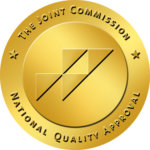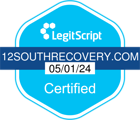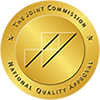The National Institue of Mental Health (NIMH) defines obsessive-compulsive disorder (OCD) as a “common, chronic, and long-lasting disorder in which a person has uncontrollable, recurring thoughts (”obsessions”) and/or behaviors (“compulsions” that he or she feels the urge to repeat over and over.” Many people may assume that OCD develops from a dire need to be in control. However, it is actually a diagnosable anxiety disorder.
These patterns of obsessions and compulsions are unwanted and often cause intense emotions of fear and discomfort in an individual that struggles with them. It is not uncommon for people to refer to themselves as being or having OCD when they need something a certain way, such as having a specific organizational structure for their home. However, those that have been diagnosed with OCD experience chronic and severe symptoms that impair their ability to function normally in daily life.
Like all mental health disorders, it is essential to become familiar with OCD to develop a greater understanding and empathy for those with it. Likewise, learning about potential warning signs and symptoms can motivate individuals to encourage treatment for their loved ones that may be struggling.
The Prevalence of OCD
An article from Molecular Psychiatry sought to address the epidemiology of OCD and its potential significance as a public health issue by exploring data from the National Comorbidity Survey Replication (NCS-R), “a nationally representative survey of U.S. adults.” A subsample of nearly 2100 individuals was assessed for meeting DSM-IV criteria for lifetime OCD.
The data found that while more than 25% of the sample reported experiencing a combination of obsessions and compulsions throughout their lives, only 2.3% of the sample met the full criteria for lifetime OCD. Research from the Journal of Clinical Psychiatry confirms that the prevalence of OCD in the United States mirrors worldwide prevalence, affecting nearly two percent of the general population.
While these numbers may seem small, it may be helpful to recognize that the world’s population currently sits at nearly 7.8 billion people. Further, two percent of 7.8 billion is nearly 156 million. These statistics highlight OCD as a significant public health issue that needs to be addressed.
Signs and Symptoms of OCD
The NIMH explains that the main symptoms of OCD include obsessions, compulsions, or a combination of the two. Simply put, an individual with OCD will experience an obsession and may feel compelled to behave or act a certain way in an attempt to calm, resist, or block their obsessive thought.
It is important to remember that these symptoms may present themselves differently for each person. Likewise, some symptoms may be more prevalent or intense during certain times, such as times of high stress.
What Are Obsessions?
Obsessions are defined by the NIMH as “repeated thoughts, urges, or mental images that cause anxiety.” Obsessive thoughts develop from the repeated misinterpretation of intrusive thoughts. Some individuals develop obsessions as a response to seemingly life-threatening events. Others may inherit obsessive behavior from their parents.
Examples of common obsessions include:
- Fear of germs or getting sick
- Persistent fear of harm or death
- Aggressive or violent thoughts toward self or others
- Unwanted, concerning thoughts regarding sex, religion, or harm
- Needing to know or remember things
- Excessive concerns with orderliness
OCD obsessions can be triggered by internal and external stimuli but tend to extend beyond one specific trigger. They can also range in severity, change in nature, and typically do not respond to logic. Obsessions can produce a myriad of emotions, ranging from annoyance and discomfort to overwhelm, disgust, panic, and more.
What Are Compulsions?
Compulsions are defined by the NIMH as “repetitive behaviors that a person with OCD feels the urge to do in response to an obsessive thought.” They are typically carried out to either manage or prevent an obsessive thought from occurring or ease any anxiety associated with the thought. Examples of compulsions include:
- In response to a fear of germs or getting sick, excessive cleanliness, such as handwashing, showering, and cleaning the house
- In response to excessive worry about safety, excessive checking of locks, or ensuring that electrical appliances are turned off
- In response to needing to know or remember things, needing to constantly ask questions
- Repeating routine activities
- Touching, tapping, or behaving in a specific way (such as touching things in “threes” or three times)
Compulsions often become habitual, involving constant repetitions and following specific patterns. While engaging in compulsions may help relieve anxiety in the short term, these behaviors can reinforce anxiety and the need to engage in such behaviors.
OCD and Co-Occurring Substance Abuse
It is not uncommon for individuals with OCD to struggle with co-occurring substance abuse or substance use disorder (SUD). Many individuals will turn to alcohol and other drugs in an attempt to self-medicate their distress or relieve their anxieties.
However, similar to the lasting effects that can result from engaging in compulsions, self-medicating with substances can reinforce feelings of anxiety. Additionally, after the effects of substances wear off, withdrawal symptoms can cause an individual to reengage with substances repeatedly. This often initiates the development of addiction.
Treatment for OCD
It is important to understand that treatment is available for those struggling with OCD or co-occurring SUD. Often, a combination of medication and psychotherapy can help ease symptoms of OCD and help individuals better navigate intrusive thoughts and emotions.
In psychotherapy, such as cognitive-behavioral therapy (CBT), individuals can better understand the connections between their thoughts, emotions, and behaviors. Specific treatment approaches, such as exposure and response prevention (EX/RP), may be used within sessions to help gradually expose clients to their fears and obsessions. Learning about obsessions can help individuals better recognize why they exist and learn healthier ways to manage the emotions that they may cause.
Obsessive-compulsive disorder (OCD) is a common anxiety disorder characterized by intrusive thoughts and urges that motivate an individual to engage in compulsive behavior. For individuals with OCD, these obsessions and compulsions can be severe and impair their ability to function in everyday life. Here at 12 South Recovery, we understand how challenging it can be to seek treatment and recovery from mental health disorders and substance use disorders (SUDs). We offer a wide range of treatment programs for clients seeking recovery and support and are dedicated to helping you get there. We are a client-centered treatment facility that believes in our clients’ ability to regain control of their lives. To learn more, call 866-839-6876.


















